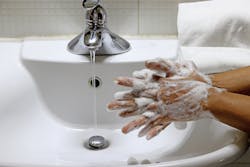Five medical organizations are recommending updated best practices for hand hygiene to protect patients and staff in healthcare settings. The recommendations emphasize the importance of healthy skin and nails and easy access to alcohol-based hand sanitizers.
Strategies to Prevent Healthcare-Associated Infections through Hand Hygiene: 2022 Update, one in a series of expert guidance documents known collectively as the Compendium, was published in the journal Infection Control & Hospital Epidemiology.
The document addresses how facilities can train healthcare personnel in proper technique, monitor their compliance, engage them in the selection of products to keep their skin healthy, and properly use gloves. It also discusses where facilities should place and how they should maintain alcohol-based sanitizer dispensers and sinks.
The guidance reviews the evidence around nail polish, gel, and shellac, which shows that short, natural nails with standard polish or no polish are easiest to clean. The authors found no new evidence specific to chipped nail polish and artificial nails but note previous findings that they can harbor germs. The guidance leaves specific policies about nail polish, gels, shellac, and artificial nail extenders to the discretion of infection prevention programs at each facility, with the exception of policies for those who scrub for surgery or work in high-risk areas. These personnel should maintain short, natural fingernails free of polish and nail extenders.
Citing research that shows only 7% of healthcare personnel effectively clean the entire surface of their hands, the guidance recommends ongoing training in handwashing and proper use of sanitizer. Thumbs and fingertips were most frequently missed.

